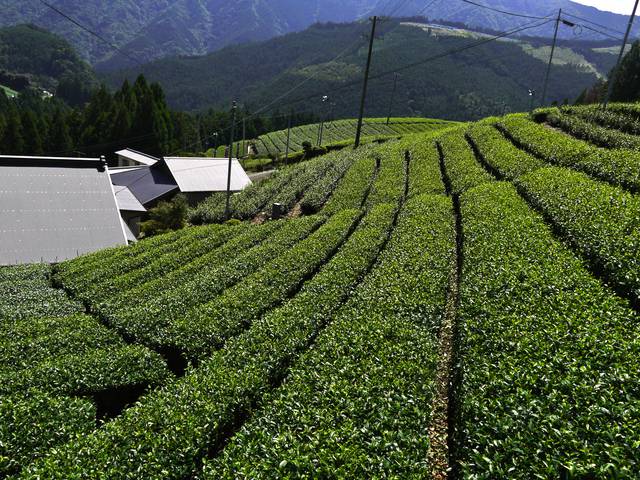
A Guide to Tasty Shizuoka Tea to Take Home as Gifts
Japanese green tea is both tasty and healthy. Shizuoka Prefecture is especially famous as a producer of green tea, but did you know that even within Shizuoka, there are many different flavors and aromas of tea depending on the area it is produced in? This time, we delve deep into the appeal of Shizuoka-cha (Shizuoka tea).
This post may contain affiliate links. If you buy through them, we may earn a commission at no additional cost to you.
Characteristics of Shizuoka-cha
Shizuoka-cha is the general term for Japanese green tea from Shizuoka Prefecture. The prefecture has a climate suited to growing tea leaves as well as sophisticated tea-making technology. Shizuoka is a prefecture that is known as "Japan\'s No.1 tea region", with the largest area of tea farms, producing about 40% of all tea made in Japan and has more than 20 tea-producing areas.
Only teas made 100% with tea leaves from Shizuoka can be labeled as Shizuoka-cha. Teas made with more than 50% but less than 100% tea leaves from Shizuoka, and has undergone the final stages of processing within Shizuoka, are labeled Shizuoka-cha Blend, so be sure to check the labels when shopping.

Recommended Teas
Following are explanations about the characteristics of each tea-producing area.
Shimizu-cha
Shimizu-cha is tea that is grown in the Shimizu area, which has a history of producing tea leaves dating back to the Kamakura Period (1185 - 1333). The tea plantations spread out on sharp slopes between mountains, and the topography is said to be ideal for making tea leaves. The mist from the streams that block the sunlight act as natural shields so the tea leaves are rich in amino acids, which create the flavors in tea. The tea made with these leaves have soft and light flavors, is aromatic and have bright colors. The leaves are shaped like needles.

Kawane-cha
Kawane-cha is green tea produced in the Haibara district and Kawane-honcho area from the middle to southern parts of Shizuoka Prefecture. These areas have been known as producers of tea leaves since the Edo Period (1603-1867). Tea leaves with rich flavors are produced by the clear water of Oi River, which flows from the Southern Japanese Alps, and the mist from the river that comes up in the morning and evening. The tea leaves have a dark, blue-green color and are characterized by a light bitterness, deep umami flavors and rich aroma.

Kakegawa-cha
This is tea made in Kakegawa City, in southwest Shizuoka Prefecture, which is centered around the slopes of a mountain. The city is blessed with a mild climate that is suited to growing tea leaves and just the right amount of rain, so there are tea plantations spread out through the city. It is particularly famous for its fukamushi sencha, a green tea that is steamed for 2 to 3 times longer than the standard duration, so that it is steamed to the core and devoid of any green tastes or bitterness. It has a rich flavor with natural sweetness, a soft texture and a light aroma.

Makinohara-cha
This is tea made in Makinohara City, which faces Suruga Bay in southern Shizuoka Prefecture. With a warm climate and long hours of daylight which is suited for making high quality tea, there is a tea plantation with an area of 2,610ha in the city, which is one of the largest in Japan. It is also famous as the area that originated fukamushi-cha (tea that is steamed for 2 to 3 times longer than the standard). The long steaming process brings out the deep umami flavors more than with standard sencha, so you can enjoy a soft yet rich taste. The aroma is light and delicate.

Tenryu-cha
This tea is made in central Hamamatsu City (previously Tenryu City) in western Shizuoka Prefecture and the area surrounding Tenryu River, which runs north to south. There are many tea plantations dotted around slopes that are at high altitudes between mountains where the thick morning mist helps to create aromatic tea leaves with delicate and refined flavors. Many of the farmers in this area still pick the tea leaves by hand in the traditional manner. During tea harvest season, they begin work early in the morning, and pickes only the tasty new leaves.

The teas introduced here can be purchased at shops run by tea farms in each area, as well as at tea specialty shops, department stores, shopping centers, and souvenir shops in the prefecture. Be sure to bring some home as gifts.
The information in this article is accurate at the time of publication.




